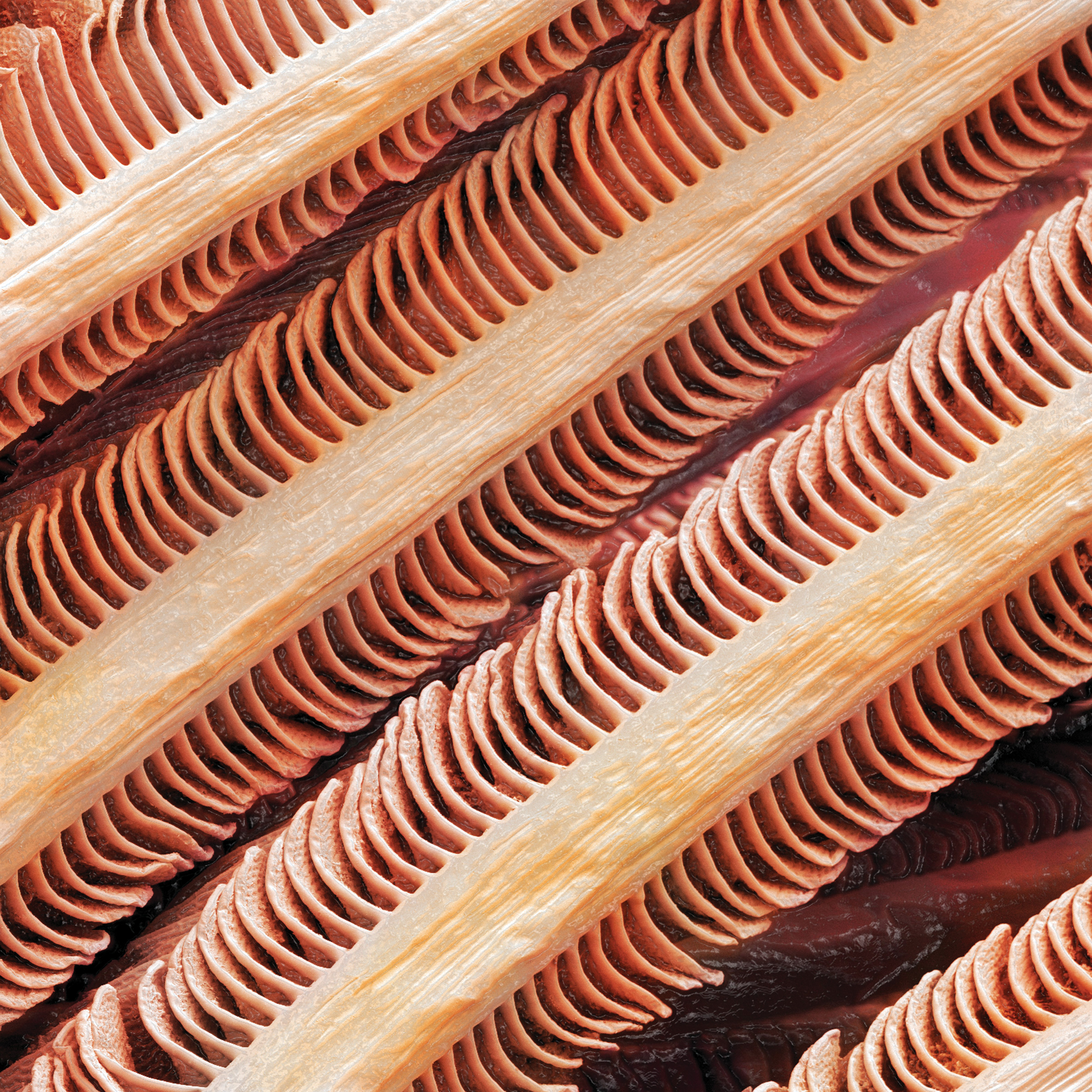CHAPTER 39 INTRODUCTION
CORE CONCEPTS
39.1 Respiration and circulation depend on diffusion over short distances and bulk flow over long distances.
39.2 Respiration provides oxygen and eliminates carbon dioxide in support of cellular metabolism.
39.3 Red blood cells produce hemoglobin, greatly increasing the amount of oxygen transported by the blood.
39.4 Circulatory systems have different-sized vessels that facilitate bulk flow and diffusion.
39.5 The evolution of animal hearts reflects selection for a high metabolic rate, achieved by increasing the delivery of oxygen to metabolically active cells.

As animals evolved to be larger and more complex, they faced the challenge of obtaining an adequate supply of oxygen (O2) and nutrients and, at the same time, eliminating carbon dioxide (CO2) and other waste products. In this chapter, we explore how animal respiratory and circulatory systems evolved to meet the metabolic needs of an animal’s cells. In particular, we focus on the uptake of O2 and the release of CO2, key gases in cellular respiration (Chapter 7).
Gases, nutrients, and wastes are continually being exchanged between an organism and its environment. Because of their small size or thin bodies, single-celled organisms and simple multicellular animals exchange compounds with the environment by diffusion. Because diffusion works effectively only over very short distances, larger and more complex animals cannot rely on diffusion as the sole means of gas, nutrient, and waste exchange (Chapter 28). These animals evolved respiratory structures at the body’s surface for taking up O2 and releasing CO2, and internal circulatory systems for long-distance transport to different body regions.
Because similar physical laws govern gas and fluid movement, animal respiratory and circulatory systems share many features. However, fish obtain O2 from water, whereas land animals breathe air. Water and air have very different physical properties. Thus, aquatic and terrestrial environments pose distinct challenges to the animal in obtaining O2. Because life first began in the water, the evolution of life on land required substantial changes in how animals exchange gases, take up nutrients, and eliminate wastes.